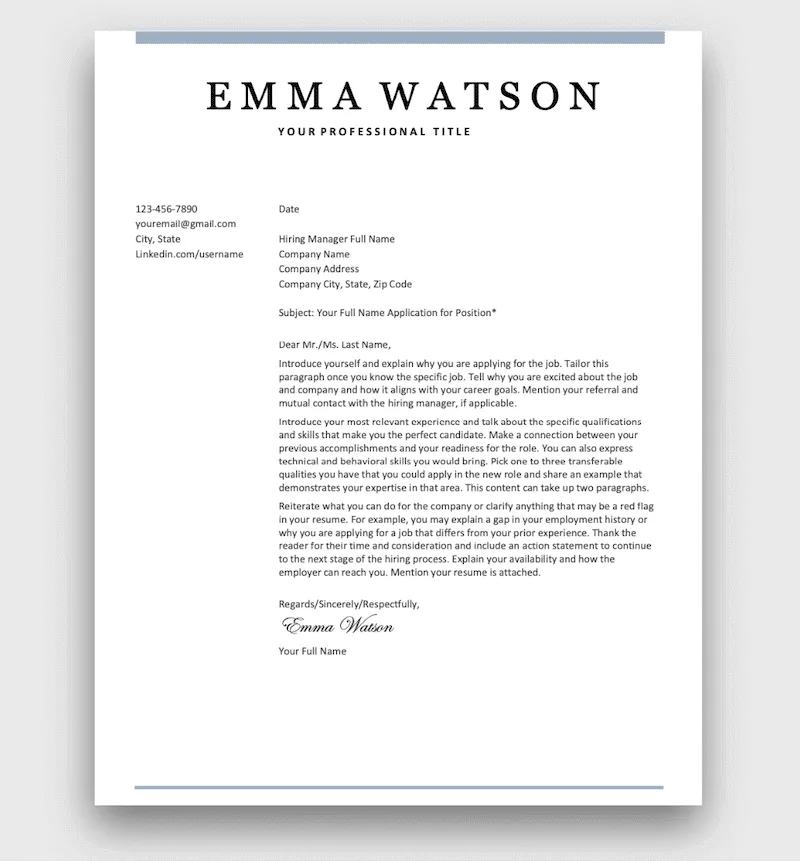What is a Cover Letter?
A cover letter is a crucial document that accompanies your resume when you apply for a job. It serves as an introduction to your qualifications and highlights why you are the ideal candidate for the position. Think of it as a personalized sales pitch, where you articulate your skills, experiences, and enthusiasm for the opportunity. A well-crafted cover letter can significantly increase your chances of getting noticed by a hiring manager and securing an interview. It provides a space to showcase your personality and communication skills, which a resume alone cannot always convey effectively. Moreover, a cover letter allows you to elaborate on specific achievements and connect them directly to the job requirements, demonstrating your understanding of the role and your value proposition.
Why is a Cover Letter Important?
The importance of a cover letter cannot be overstated in the job application process. It’s often the first impression you make on a potential employer, and a well-written letter can set you apart from other applicants. It allows you to explain gaps in your employment history, address any concerns the employer might have, and showcase your personality and writing abilities. A cover letter provides context to your resume, enabling you to connect your skills and experiences directly to the specific requirements of the job. In today’s competitive job market, a cover letter is an essential tool that helps you stand out and demonstrates your genuine interest in the position and the company. Many employers consider a cover letter a mandatory part of the application process; failing to submit one when requested can automatically disqualify you.
Key Components of a Cover Letter

A strong cover letter is composed of several essential elements, each contributing to its overall effectiveness. These components work together to present a compelling case for your candidacy. Understanding and incorporating these elements is crucial for creating a cover letter that grabs the hiring manager’s attention and increases your chances of landing an interview. The key components ensure that your letter is well-structured, informative, and persuasive, making a positive impact on the reader.
Contact Information
Begin by including your contact information at the top of the cover letter. This typically includes your name, phone number, email address, and sometimes your LinkedIn profile URL. Ensure that the contact information is accurate and professional. It should be easy for the hiring manager to reach you. Double-check all details before sending the letter to avoid any errors that could prevent you from being contacted for an interview.
Date
Below your contact information, include the current date. This helps the employer know when the letter was written. Formatting the date consistently is important for a professional appearance. Use a standard format, such as Month Day, Year (e.g., January 15, 2024).
Hiring Manager’s Information
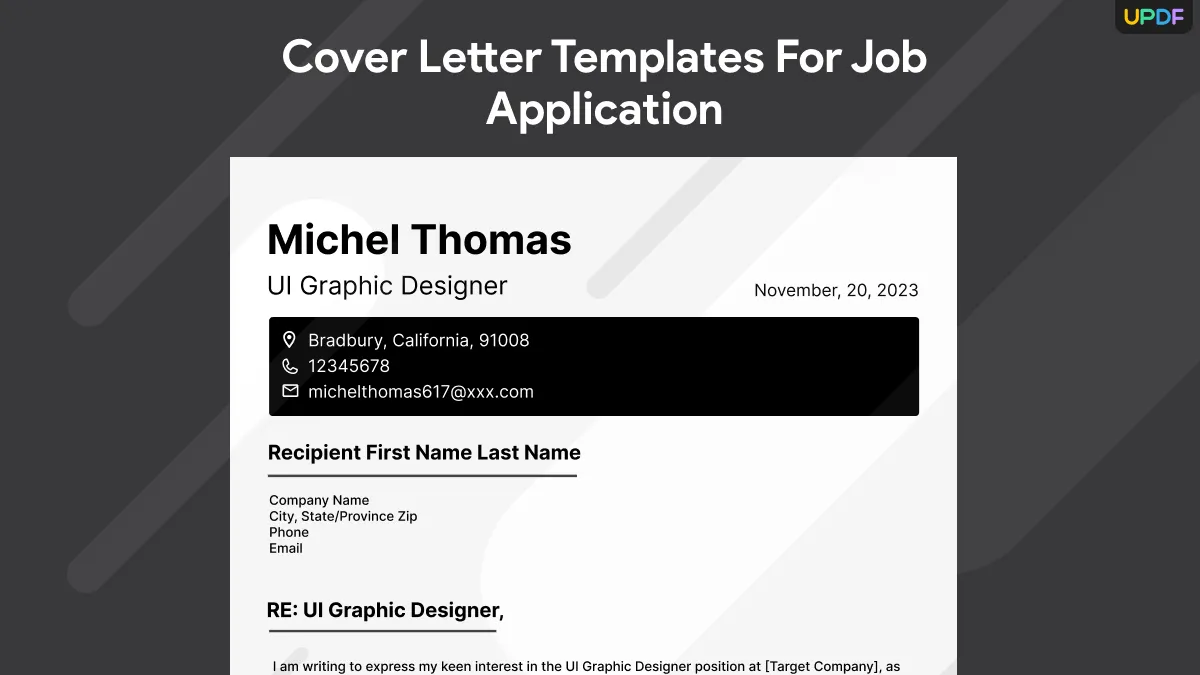
If possible, address the cover letter to a specific person (the hiring manager or the relevant contact person). This shows that you have done your research and demonstrates a personal touch. If you can’t find a name, use a professional greeting like ‘Dear Hiring Manager’ or ‘Dear [Department Name] Team.’ Researching the hiring manager’s name adds a personalized element. If a name is unavailable, using a general greeting is a professional alternative.
Professional Greeting
Start your cover letter with a professional greeting. Use ‘Dear Mr./Ms./Mx. [Last Name]’ if you know the hiring manager’s name. If you don’t know the name, use a general greeting like ‘Dear Hiring Manager’ or ‘Dear [Department Name] Team.’ Ensure the greeting is appropriate for the context. A professional and respectful greeting sets a positive tone for the rest of the letter.
Opening Paragraph
The opening paragraph should capture the reader’s attention and state the purpose of your letter. Express your interest in the position and mention where you found the job posting. Briefly summarize why you’re a strong candidate. The opening should immediately grab the reader’s interest and make them want to read further. Clearly stating your intention establishes the context for the rest of the letter. Keep the opening concise and impactful.
Express your interest
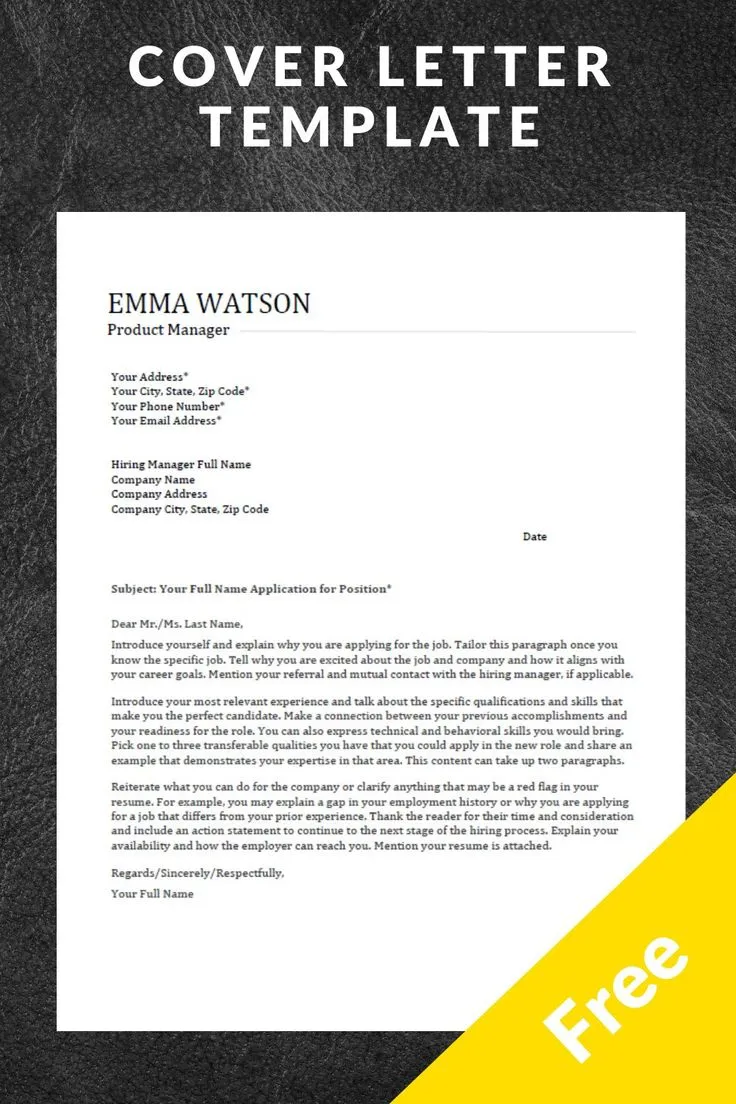
Clearly and enthusiastically express your interest in the specific job. Let the hiring manager know why you’re excited about the opportunity. Show your genuine interest in the position and the company. Avoid generic statements; be specific and personalized in your approach. Highlight what specifically attracts you to the role.
Mention the job title and where you found the position
In the opening paragraph, mention the specific job title you are applying for and where you found the job posting (e.g., LinkedIn, company website, job board). This helps the hiring manager quickly understand which position you’re interested in. Including this information ensures clarity and helps the hiring manager easily identify the specific job application. Double-check the job title for accuracy.
Body Paragraphs
The body paragraphs are where you showcase your skills, experiences, and achievements. Use these paragraphs to demonstrate how your qualifications align with the job requirements. Provide specific examples to support your claims and show the value you would bring to the role. Tailor your content to the job description. Each paragraph should focus on a specific aspect of your qualifications and provide clear, concise information.
Highlight your skills and experiences
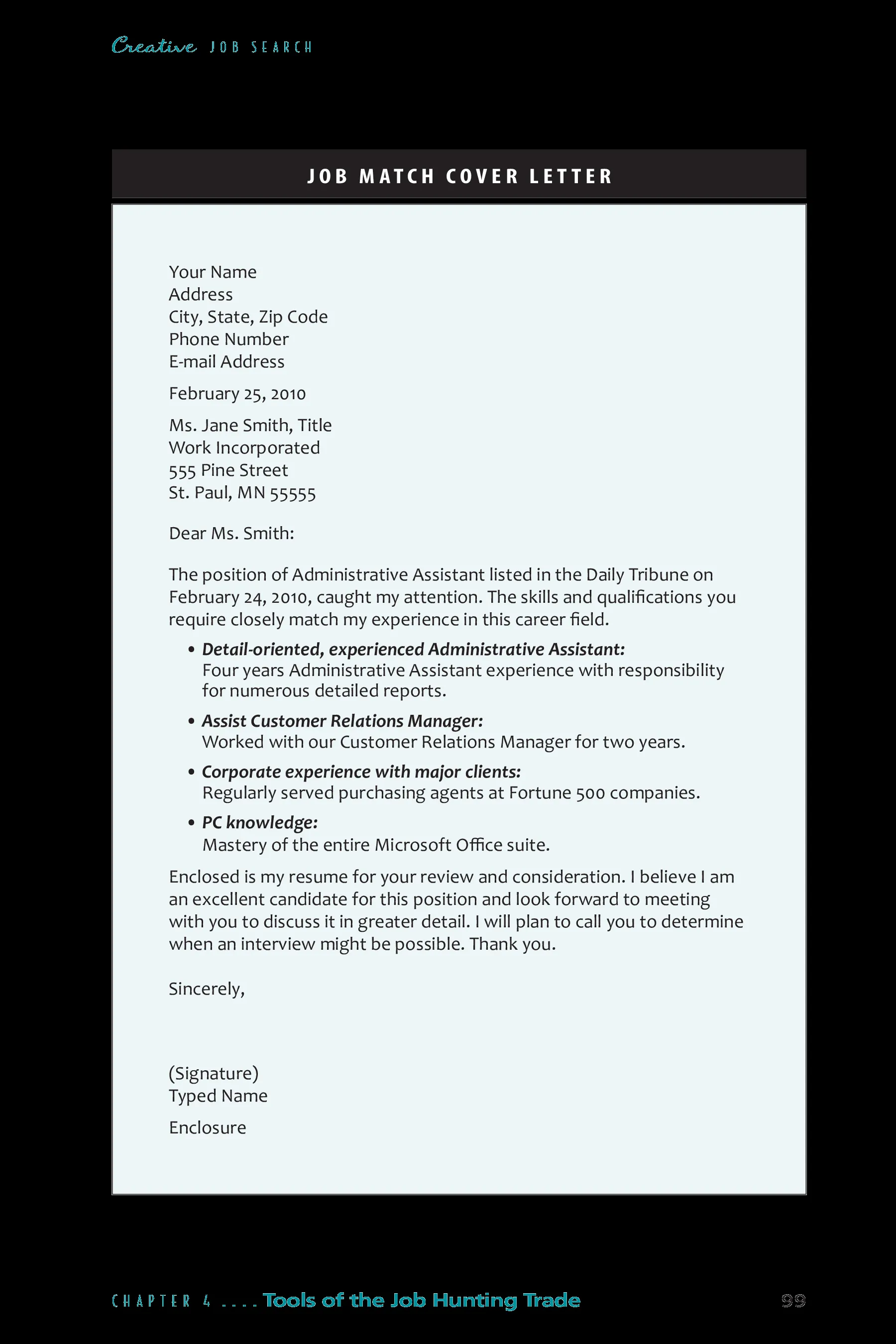
Detail your relevant skills and experiences that match the job description. Use keywords from the job posting to show that you understand the requirements. Describe how your skills and experiences have prepared you for the role. Provide specific examples of past projects or responsibilities that demonstrate your capabilities. Focus on the qualifications that are most relevant to the position.
Quantify your achievements
Whenever possible, quantify your achievements with numbers, percentages, or specific results. For example, instead of saying ‘Managed a team,’ say ‘Managed a team of 10 employees, resulting in a 15% increase in productivity.’ Use metrics to demonstrate the impact of your work. Quantifiable achievements make your accomplishments more compelling and show your value. Provide hard data to support your claims and impress the hiring manager.
Tailor the letter to the job description
Carefully tailor your cover letter to the specific job description. Highlight the skills and experiences most relevant to the role and company. Review the job requirements and address each one in your letter. Customize your cover letter to reflect the specific needs and expectations of the position. Adapting your letter ensures it directly addresses the hiring manager’s needs.
Closing Paragraph
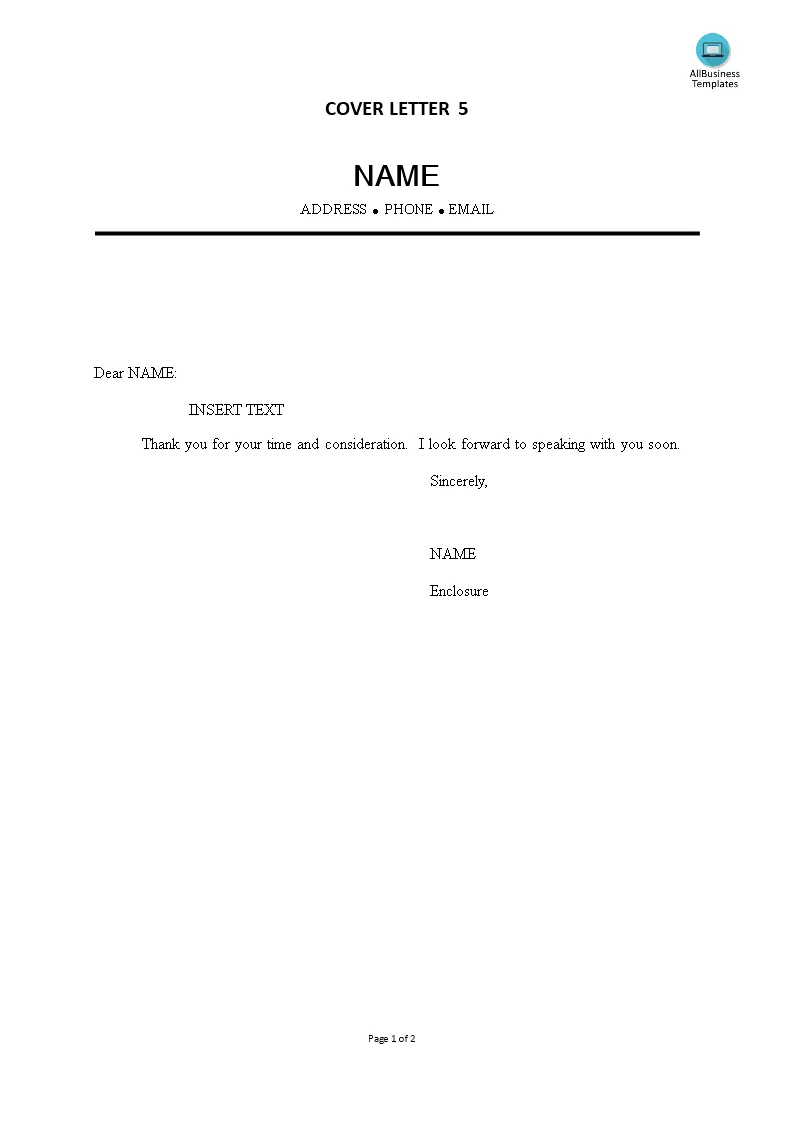
The closing paragraph should reiterate your interest in the position and express your enthusiasm. Include a call to action, such as requesting an interview. Keep the closing paragraph concise and professional. End with a confident and positive tone. Express your anticipation for the opportunity to discuss your qualifications further.
Reiterate your interest and enthusiasm
Reiterate your interest in the position and express your enthusiasm for the opportunity. Mention why you are particularly excited about the role or the company. Restate your key qualifications and their relevance to the job requirements. Reminding the hiring manager of your interest and excitement reinforces your suitability.
Call to action
Include a clear call to action, such as requesting an interview or expressing your availability for a discussion. Make it easy for the hiring manager to take the next step. Suggest a specific next step, such as a phone call or a meeting. This helps move the application process forward. Use a confident and professional tone.
Formal Closing
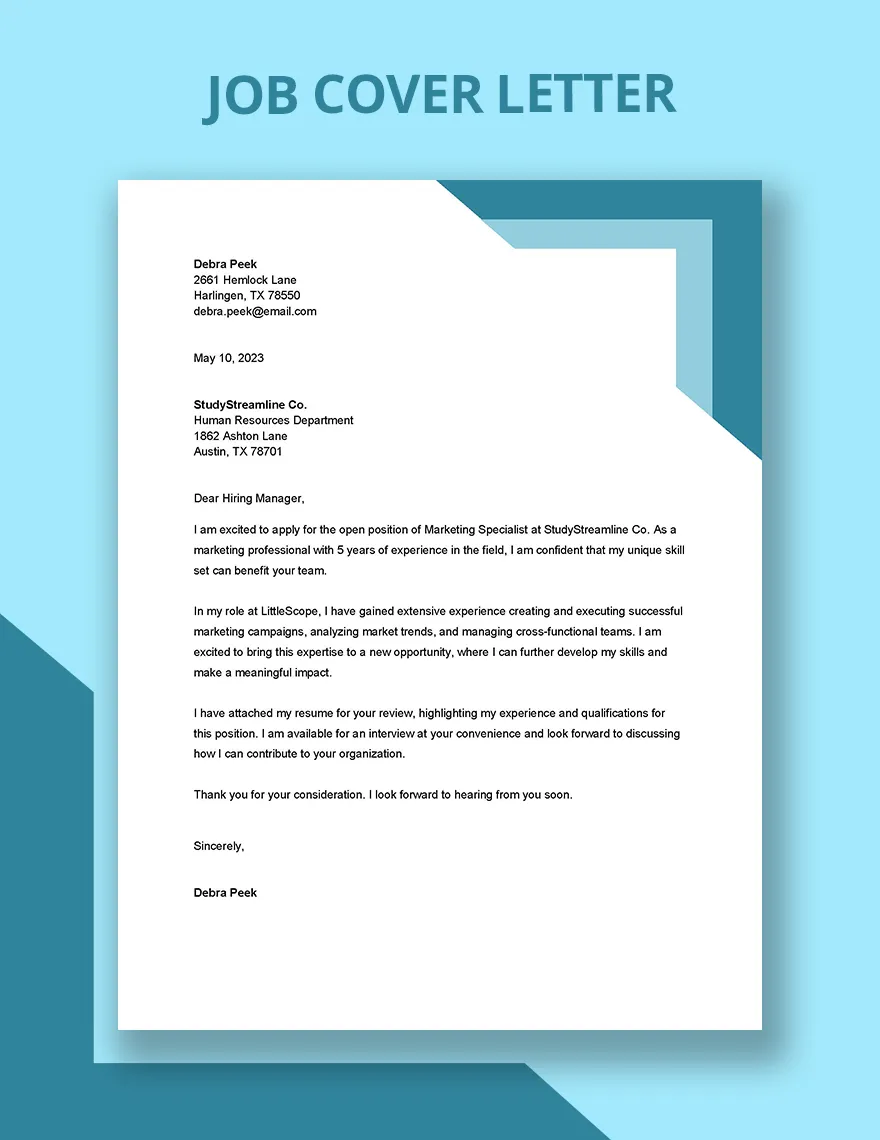
End your cover letter with a formal closing. Use a professional closing, such as ‘Sincerely,’ ‘Respectfully,’ or ‘Best regards.’ Choose a closing that is appropriate for the tone and context of your letter. Ensure the closing is consistent with the overall professional tone of your letter. Maintain a formal and respectful tone throughout the closing.
Signature (if printed)
If you are printing your cover letter, leave space for your handwritten signature after the formal closing. Sign your name neatly in the space provided. If you are submitting your cover letter electronically, you can simply type your full name. This ensures a professional and personalized touch.
Enclosure (if applicable)
If you are including any additional documents with your cover letter, such as a portfolio or writing samples, indicate this at the end of the letter. Use the word ‘Enclosure’ or ‘Enclosures’ followed by a list of the attached documents. This provides clarity and ensures that the hiring manager knows what to expect. List all attached documents to avoid any confusion.
Formatting Tips for Cover Letters
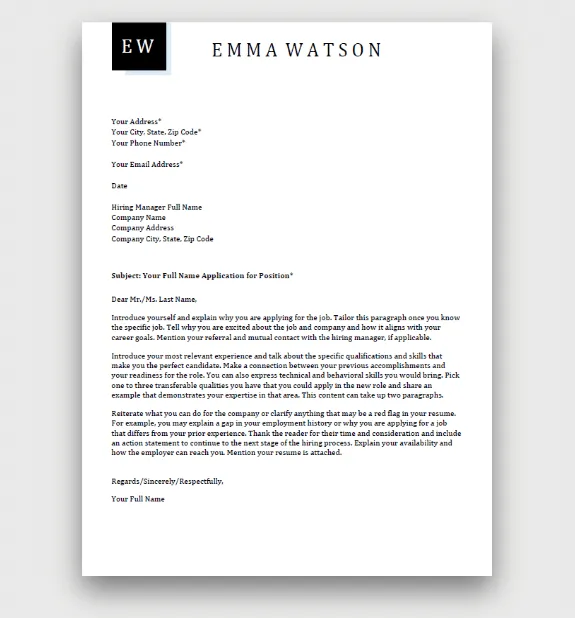
Proper formatting is essential for creating a professional and easy-to-read cover letter. Consistent formatting helps the hiring manager quickly understand your qualifications. Clear formatting enhances readability and showcases your attention to detail. The following formatting tips can make your cover letter more effective.
Font and Font Size
Choose a professional and readable font, such as Times New Roman, Arial, or Calibri. Use a font size between 10 and 12 points for the body of the letter. Ensure consistency throughout the document. A readable font and size make your letter easier on the eyes. Avoid overly decorative fonts.
Margins and Spacing
Set your margins to 1 inch on all sides. Use single spacing within paragraphs and double spacing between paragraphs. Proper spacing enhances readability and creates a clean layout. Consistent margins and spacing contribute to a professional look. Avoid excessive white space or overcrowding.
Length
Keep your cover letter concise, ideally no more than one page. Focus on the most relevant information and avoid unnecessary details. Be succinct and to the point. A brief and well-written letter is more likely to be read in its entirety. Edit ruthlessly to stay within the one-page limit.
Proofreading and Editing
Proofread your cover letter carefully for any typos, grammatical errors, or inconsistencies. Use a spell checker, but also read through the letter manually. Have someone else review your letter for a fresh perspective. Proofreading is an important step to demonstrate professionalism. Ensure the letter is polished and free of errors.
Where to Find Free Cover Letter Templates
Numerous resources offer free cover letter templates to help you get started. These templates provide a structured framework that you can customize to fit your needs. Utilizing free templates can save you time and ensure your cover letter looks professional. Here are some reliable places to find free templates.
Template Websites
Many websites offer free cover letter templates that you can download and customize. Search for websites that specialize in job search resources and career advice. Ensure the templates are compatible with your word processor and are easy to edit. Some popular sites include Resume.com, Canva, and Zety. These websites offer a wide variety of templates, from basic to more elaborate designs. (Image: template-websites)
Word Processor Templates
Microsoft Word and Google Docs offer built-in cover letter templates. These templates provide a basic structure and formatting that you can easily modify. Open a new document and search for cover letter templates. Choose a template that suits your needs and customize it with your information. These templates are convenient and readily available. (Image: word-processor)
Online Cover Letter Builders
Online cover letter builders are interactive tools that guide you through the process of creating a cover letter. These tools offer step-by-step instructions and allow you to customize your letter with ease. Enter your information, and the builder will format it into a professional cover letter. Some popular cover letter builders are found on sites like Resume.io and Kickresume. Online builders are useful for those who prefer a guided approach. (Image: online-cover-letter-builders)
Tips for Customizing Your Template
While using a template provides a starting point, customizing it is crucial to make your cover letter unique. Customization ensures that your cover letter reflects your personality and highlights your relevant skills and experiences. Adapt the template to your specific needs, and tailor your content to match the job requirements.
Customize the content
Modify the content of the template to highlight your specific skills and experiences. Tailor the letter to match the job description and requirements. Use keywords from the job posting to demonstrate your understanding of the role. Add specific examples of your achievements and how they align with the job. This shows your qualifications and makes your application more appealing. (Image: customize-template)
Personalize your tone
Adjust the tone of the cover letter to reflect your personality and writing style. Ensure the tone is professional, but also authentic. Write in a style that is natural for you. Use language that is appropriate for the company and the industry. Personalizing the tone makes your cover letter more engaging and memorable.
Examples of Cover Letter Templates
Different job types require different cover letter formats. Here are some examples of cover letter templates to guide you, each adapted for different career stages and career changes. These examples help you understand the structure and content required for various types of jobs. These templates give you a solid framework.
Entry-Level Cover Letter Template
An entry-level cover letter focuses on your skills, education, and any relevant experience. Highlight any internships, volunteer work, or projects that demonstrate your abilities. The template should emphasize your potential and enthusiasm. This template is ideal for recent graduates or those with limited work experience. It emphasizes skills and education.
Experienced Professional Cover Letter Template
An experienced professional cover letter showcases your extensive work history and accomplishments. Focus on your key achievements and quantify your successes whenever possible. The template should be tailored to the specific job requirements. This template demonstrates your established expertise and provides tangible evidence of your value. Quantify your achievements for maximum impact.
Career Change Cover Letter Template
A career change cover letter emphasizes transferable skills and relevant experience from your previous roles. Explain why you are making a career change and highlight how your skills align with the new job requirements. The template should be tailored to bridge the gap between your past experiences and the new role. Demonstrate the transferability of your skills for career change success.
Common Mistakes to Avoid
Avoiding common mistakes can significantly improve your cover letter. Mistakes detract from your professionalism and can harm your chances of getting an interview. Knowing what to avoid can prevent your application from being overlooked. Here are several key mistakes to prevent.
Generic Content
Avoid using a generic cover letter that is not tailored to the specific job or company. Generic content shows a lack of interest and can make your application less compelling. Customize your cover letter for each job application. Research the company and tailor your content accordingly. Generic content will decrease your chances of getting hired. (Image: generic-content)
Typos and Grammatical Errors
Proofread your cover letter carefully to avoid typos and grammatical errors. Errors can undermine your credibility and make you appear unprofessional. Always use a spell checker and grammar checker. Have someone else review your letter before submitting it. Typos and errors can make your application look sloppy and unprofessional.
Ignoring the Job Description
Do not ignore the job description. Tailor your cover letter to address the specific requirements and keywords outlined in the job posting. Highlight the skills and experiences most relevant to the role. Failing to address the job description shows that you haven’t taken the time to understand the role. Ignoring the job description makes it difficult to align your application.
Using Excessive Jargon
Avoid using excessive jargon or overly complex language. Keep your language clear and concise. Ensure that the hiring manager can easily understand your qualifications. Using jargon can confuse the reader and make it difficult to grasp your key skills. Write in a clear and straightforward manner.
Conclusion
A well-crafted cover letter is a powerful tool in your job application arsenal. By understanding the key components, utilizing free templates, and customizing your letter, you can significantly increase your chances of landing an interview. Remember to proofread carefully and tailor your letter to each job. By following these guidelines, you can create a cover letter that effectively highlights your qualifications and makes a lasting impression on potential employers. A compelling cover letter is an important first step towards your dream job. (Image: cover-letter-template)
